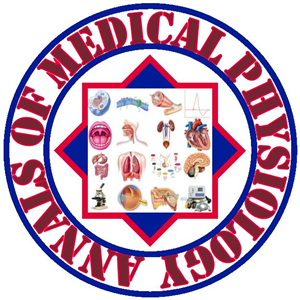Blood group reckoning: Unraveling the mystery of blood group antigens
Blood group reckoning
DOI:
https://doi.org/10.23921/amp.2018v2i4.23002Keywords:
ABH blood groups, Blood group antigens, MicrobiomeDownloads
Metrics
References
Dean L. Blood groups and red cell antigens [Internet]. Bethesda (MD): National Center for Biotechnology Information (US); 2005. Chapter 2, Blood group antigens are surface markers on the red blood cell membrane. Available from: https://www.ncbi.nlm.nih.gov/books/NBK2264/
Wikipedia. Karl Landsteiner. Available from https://en.wikipedia.org/wiki/Karl_Landsteiner (Last accessed December 24, 2018)
International Society of Blood Transfusion. Red cell immunogenetics and blood group terminology. Available from http://www.isbtweb.org/fileadmin/user_upload/Red_Cell_Terminology_and_Immunogenetics/Table_of_blood_group_systems_v6_180621.pdf (Last accessed December 26, 2018)
Farhud DD, Zarif Yeganeh M. A brief history of human blood groups. Iran J Public Health. 2013; 42(1):1-6.
Cooling L. Blood groups in infection and host susceptibility. Clin Microbiol Rev. 2015 Jul; 28(3):801-70.
D’Adamo PJ. Blood type and the microbiome. (Updated 2018 Jan 11, Cited December 24, 2018). In: Eat Right 4 Your Type [Internet]. Available from: https://dadamo.com/txt/index.pl?0010
D’Adamo PJ. Blood type and the microbiome-part 2. 2015 Jul 30 (Cited December 24, 2018). In: Personalized living [Internet]. Norwalk: D’Adamo Personalized Nutrition. c2015. Available from: http://northamericanpharmacal.com/living/2015/07/blood-types-and-the-microbiome-part-2/
D’Adamo PJ, Whitney C. Eat right 4 your type. Alberta: Cornerstone Digital; 2012.
Wayman E. The mystery of human blood types: The ABO blood group evolved at least 20 million years ago, but scientists still don’t understand the purpose of blood types. 2012 Oct 22 (Cited December 24, 2018). In: Smithsonian Magzine [Internet]. Washington, D.C: Smithsonian Institution. c2012. Available from: https://www.smithsonianmag.com/science-nature/the-mystery-of-human-blood-types-86993838/

Published
How to Cite
License
Copyright (c) 2018 Quench Academy of Medical Education and Research (QAMER)

This work is licensed under a Creative Commons Attribution 4.0 International License.
The authors warrants and represents that the submitted MANUSCRIPT is an original work and has not been published before in any form, and that it does not infringe upon any copyright or other right(s), that it does not contain infringing, libelous, obscene or other unlawful matter, that he/she is the sole and exclusive owner of the rights here-in conveyed to the Publisher, and that he/she has obtained the customary permission from the copyright owner or his legal representative whenever a text/passage from copyrighted material is quoted or a table or illustration from such material is used. The Author(s) will indemnify the Publisher for, and hold the Publisher harmless from any loss, expense or damage occasioned by any claim or suit by a third party for copyright infringement or arising out of any breach of the foregoing warranties as a result of publication of the Article. The Article shall be delivered to the Publisher free of copyright charges. In the event that the Article is not accepted and published by Publisher, this agreement becomes null and void.
Sherpa/Romeo publisher policy can be viewed at Annals of Medical Physiology - Sherpa/Romeo Policy
Plum X metrics
Article level metrics are shown here









